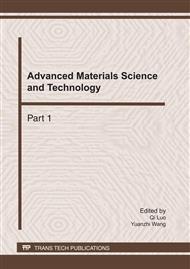p.998
p.1006
p.1013
p.1019
p.1025
p.1031
p.1038
p.1044
p.1050
Development of an Efficient Thermal Transfer Structure in Rapid Heat Cycle Molding
Abstract:
The efficiency of the orientation thermal transfer is the key in rapid heat cycle molding (RHCM) technology, because it significantly affects the energy consumption, productivity and the quality of the final polymer parts. Therefore, the thermal response of the integral mold insert in SRHCM process has been simulated by ANSYS, and a novel thermal transfer structure in the form of combined mold insert with insulation layer has been developed to reduce the energy waste. The milled U-grooves act as thermal transfer channels in this structure, which can be manufactured conveniently to obtain high surface quality easily. The simulation results show that the novel structure can save energy consumption evidently, that the heating time is reduced by 35.7 percent, and that the cooling time is reduced by 24.9 percent compared with the unmodified one.
Info:
Periodical:
Pages:
1025-1030
Citation:
Online since:
January 2011
Authors:
Price:
Сopyright:
© 2011 Trans Tech Publications Ltd. All Rights Reserved
Share:
Citation:


